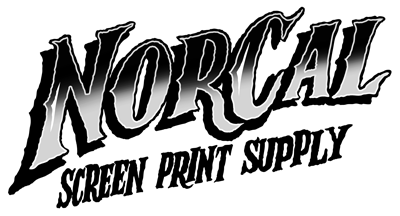Three Mistakes I made when I started burning screens for Screen Printing
Check out the video:
1. Not producing good, opaque film positives for screen exposure.
So often I see and hear people asking - what is the best brand of emulsion? Using a good quality emulsion is important, but without a properly prepared film positive, it will be very difficult to get a perfect screen.
When it comes to film positives, opacity is the most the most important factor. If the ink on your film positive must be dark and dense enough to properly block the UV light emitted from your exposure unit. If it lets light through, it will be very difficult to wash out your stencil.
If the ink is dense enough, it will do its job and block out the UV light, and enable you to rinse out your stencil a lot easier.
TIPS
- Print settings should be set to “premium photo glossy” and “best photo quality” or equivalent. Any high speed setting will usually not yield a good ink deposit onto the film.
- The color information in your digital art file should be set to 100% black to deposit the most black ink onto your film. This is assuming you are not starting out with a RIP Software.
2. Assuming speed is the most important factor when burning a screen
Quick exposure is nice, but it is not the most important. If you are trying to get the fastest burn times possible, chances are your stencils will be underexposed.
Under exposure of screens will cost you time & money, and cause undo stress.
If your stencil is not properly exposed and hardened, it can break down during the print process, and you will have to re-burn screens, possibly holding up production and missing deadlines, etc.
Durability of your stencil is most important. When exposed properly, your stencil should last for thousands of prints.
TIPS
- Pre-develop your screens by submerging them in water. Anywhere from 30 seconds to 2 minutes has worked in my experience.
- Just getting them wet will stop the emulsion from continuing to expose, allowing you to take your screen into full sunlight to rinse out.
-
Even if you are rinsing your screens inside, in low light conditions, submerging your exposed screen in water will start to loosen the unexposed emulsion and require less water in the washout booth, and less water down the drain.
3. Not Post Exposing developed screen
Post expose your screens for added durability. This can be done by simply placing the screen in the sunlight after it is washed out, or back on the exposure unit for a minute or 2. Hitting your screen with full UV light after it is rinsed out will continue to cross link the emulsion, making it harder and less susceptible to breakdown, pinholes etc.
TIPS
- On sunny days, dry your screen in the sunlight. They will dry quicker, and the emulsion will continue to crosslink and harden, creating a more durable stencil.

